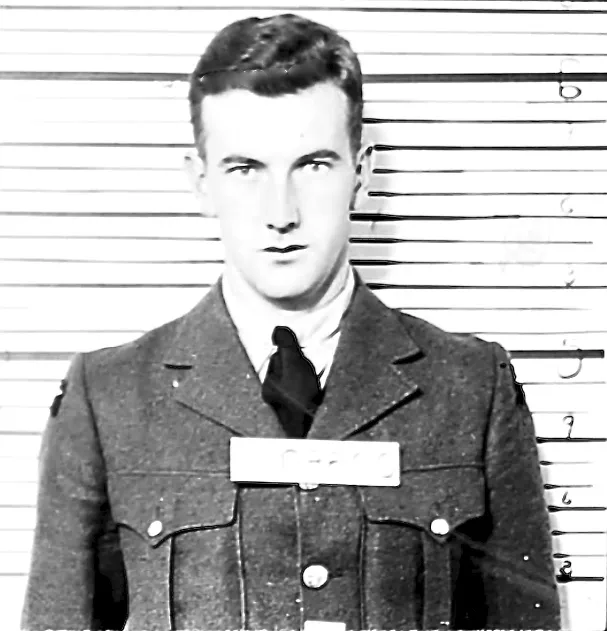Monypenny, Eric Burke (Flight Sergeant)
Killed in Action 1943-May-12


Birth Date: 1918-January-07
Born:
Parents: Son of Louis F. Monypenny and Edith M. Monypenny, of Toronto.
Spouse:
Home: Toronto, Ontario
Enlistment:
Enlistment Date: unkown date
Service
RCAF
Unit
133 Sqn- Squadron
Base
Boundary Bay, British Columbia, Canada
Rank
Flight Sergeant
Position
Pilot
Service Numbers
R/108600
Home
Accident Card - Hawker Hurricane Mk. XII serial:5383
This accident involved 1 aircraft on 1943-May-12. Hawker Hurricane XII s/n 5383.
This accident involved 1 person. Monypenny EB
This accident had 1 fatality. Flight Sergeant Eric Burke Monypenny RCAF Killed in Action service no:R/108600 Hurricane 5383
Hurricane serial: 5383

Source BBMF
The Hawker Hurricane is a single-seat fighter aircraft of the 1930s"“1940s that was designed and predominantly built by Hawker Aircraft Ltd. for service with the Royal Air Force (RAF). The Hurricane developed through several versions, as bomber-interceptors, fighter-bombers, and ground support aircraft in addition to fighters. Versions designed for the Navy were popularly known as the Sea Hurricane, with modifications enabling their operation from ships. Some were converted to be used as catapult-launched convoy escorts. By the end of production in July 1944, 14,487 Hurricanes had been completed in Britain and Canada.
A major manufacturer of the Hurricane was Canadian Car and Foundry at their factory in Fort William (now Thunder Bay), Ontario. The facility's chief engineer, Elsie MacGill, became known as the "Queen of the Hurricanes". The initiative was commercially led rather than governmentally, but was endorsed by the British government; Hawker, having recognized that a major conflict was all but inevitable after the Munich Crisis of 1938, drew up preliminary plans to expand Hurricane production via a new factory in Canada. Under this plan, samples, pattern aircraft, and a complete set of design documents stored on microfilm, were shipped to Canada; the RCAF ordered 20 Hurricanes to equip one fighter squadron and two more were supplied to Canadian Car and Foundry as pattern aircraft but one probably did not arrive. The first Hurricane built at Canadian Car and Foundry was officially produced in February 1940. As a result, Canadian-built Hurricanes were shipped to Britain to participate in events such as the Battle of Britain. Canadian Car and Foundry (CCF) was responsible for the production of 1,451 Hurricanes. Wikipedia and Harold A Skaarup Web Page
Aircraft Images
Hurricane 5383
Hurricane Mk. XII 5383
Noted on delivery date as "has to be modified before being placed in service". Delivered to stored reserve with No. 4 Training Command. Issued to No. 133 (F) Squadron at Lethbridge, Alberta on 3 July 1942. Category C crash at 20:00 on 14 July 1942 at Lethbridge. Still with this unit when it transferred to Western Air Command and moved to Boundary Bay, BC on 26 October 1942. On 15 Mar 43, the a/c was unable to be stopped before striking another Hurricane while taxying, damaging a wing tip. Cat "A" crash 1 mile east of Boundary Bay, BC, on 12 May 1943. Four a/c took off on a dawn patrol with Flight Sergeant E.B. Monypenny in #5383 as the leader. On return to Boundary Bay, the leader gave the breakaway signal to the rest of the flight. He then proceeded to do a slow roll while descending from 1,000 ft but never recovered and crashed with fatal results.1942-06-16 Taken on Strength 2019-08-20
1942-July-14 Accident: 133 Squadron Loc: Aerodrome Names: Myles
1943-March-15 Accident: 133 Squadron Loc: Boundary Bay British Columbia Aerodrome Names: Young
1943-May-12 Accident: 133 Squadron Loc: Aerodrome Names: Monypenny
1943-05-12 Struck off Strength Struck off, reduced to spares and produce 2019-08-20
